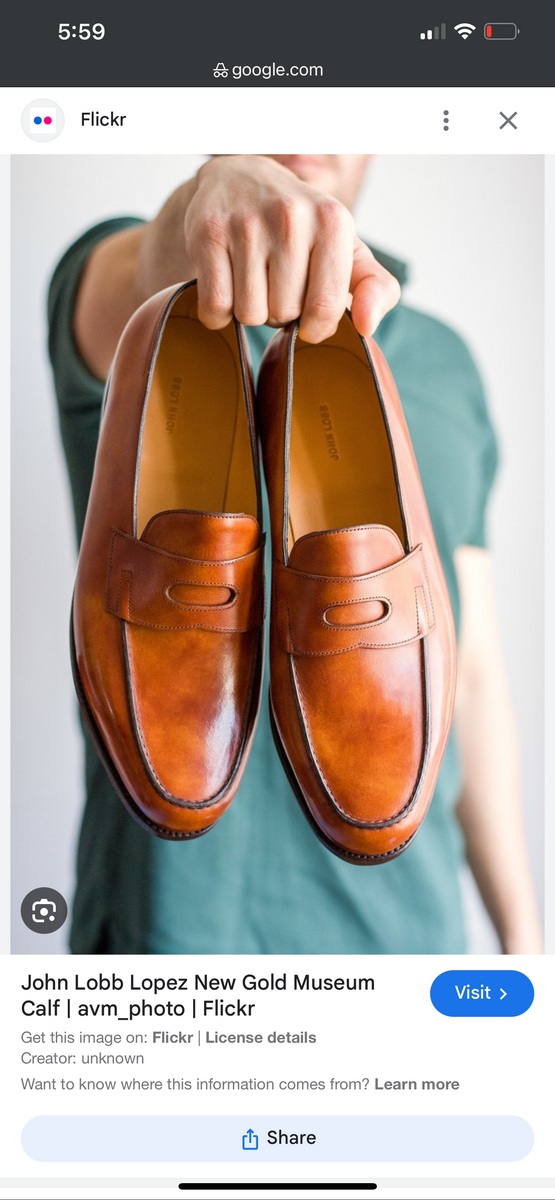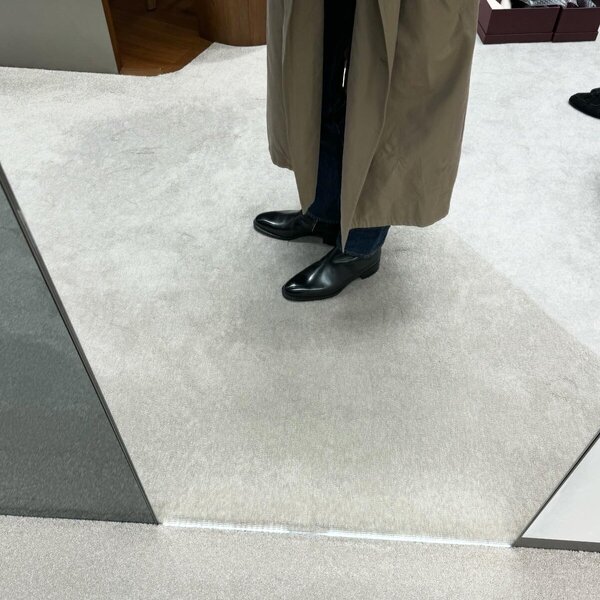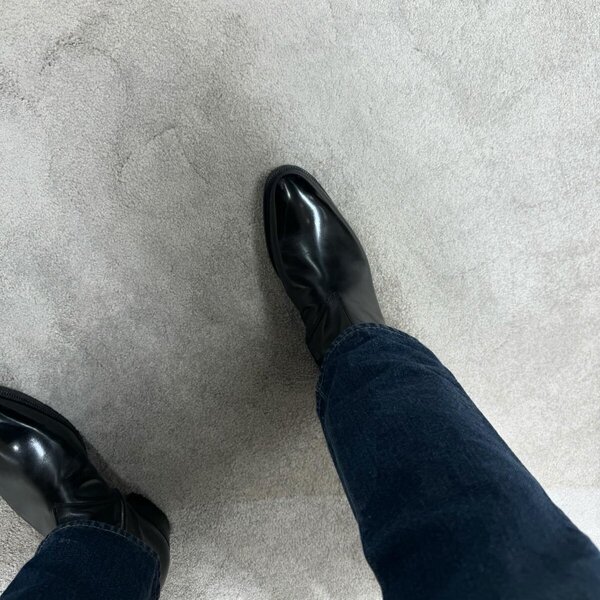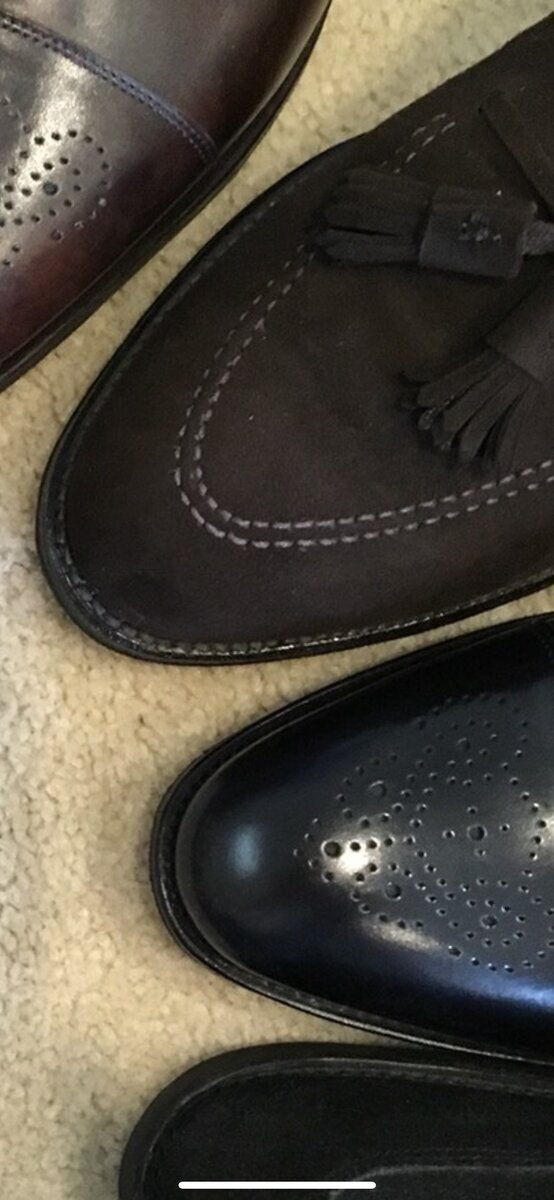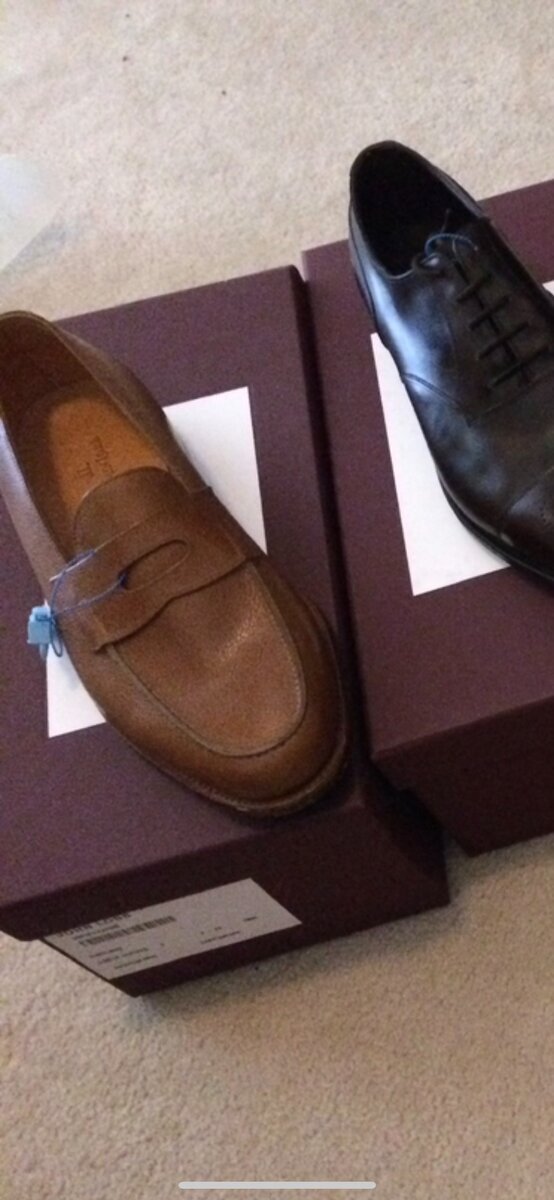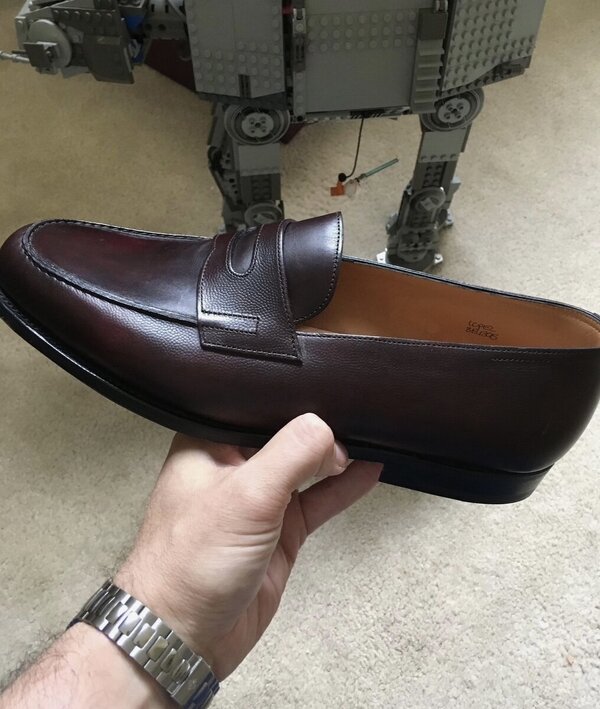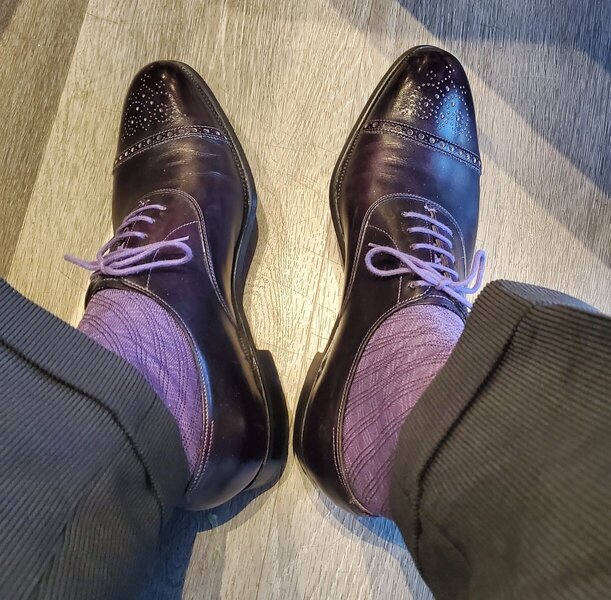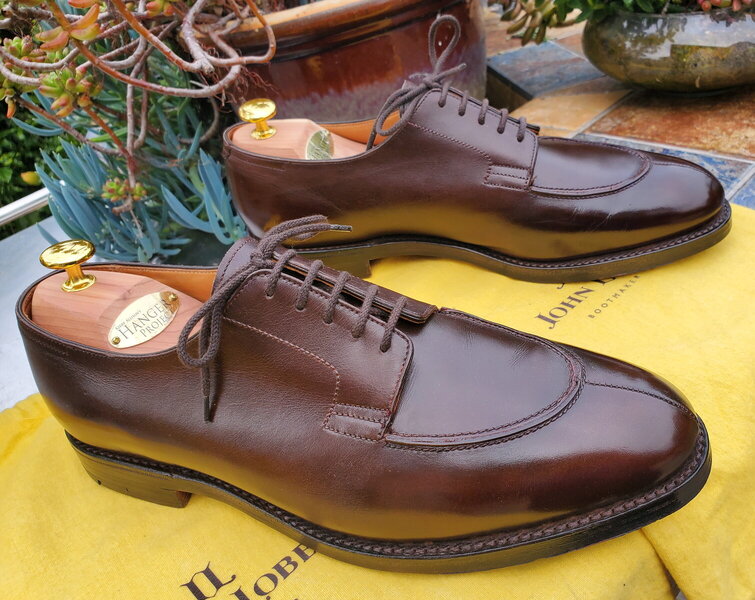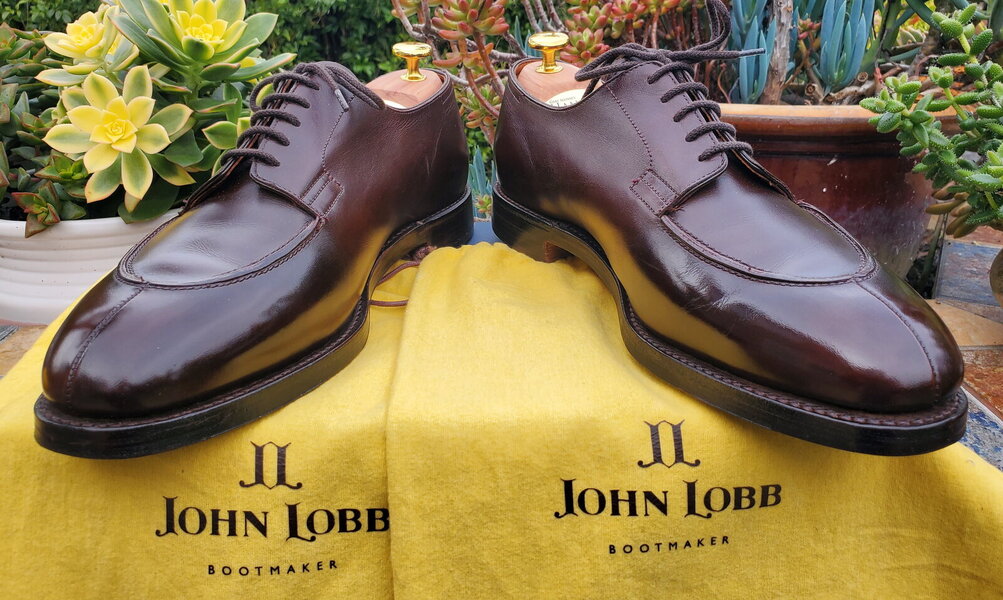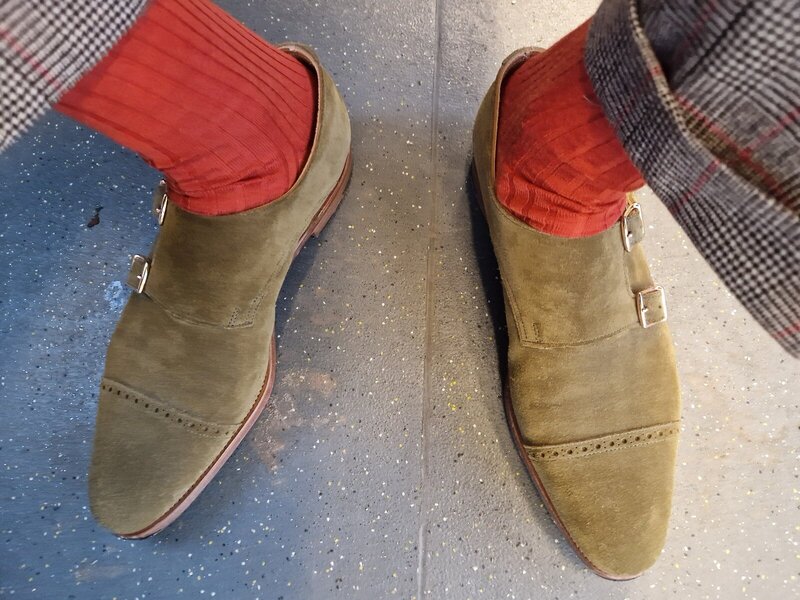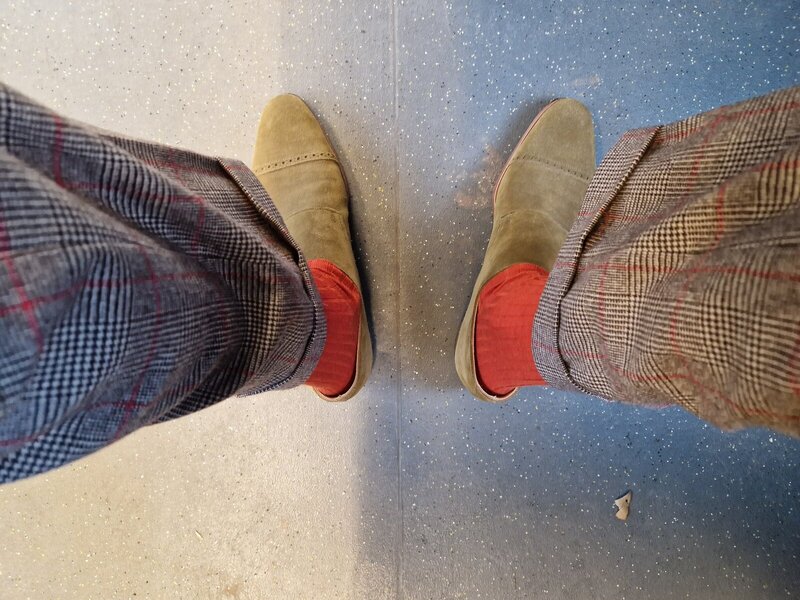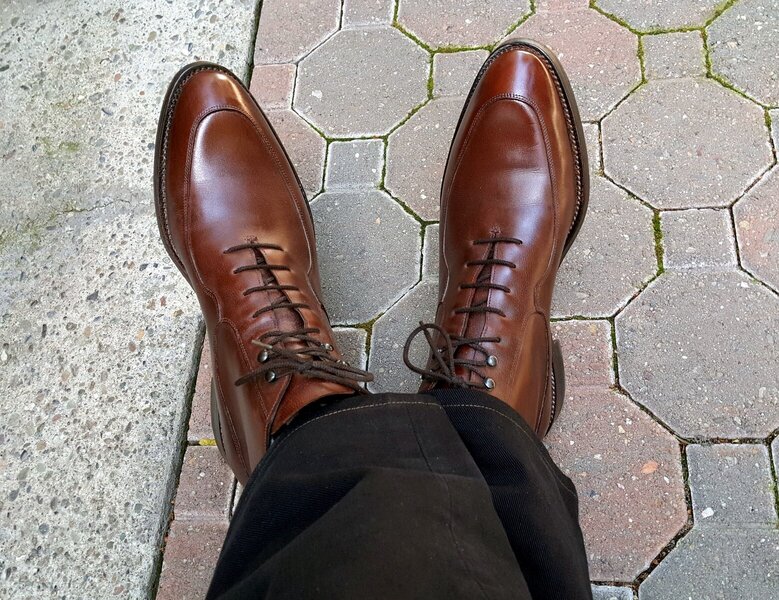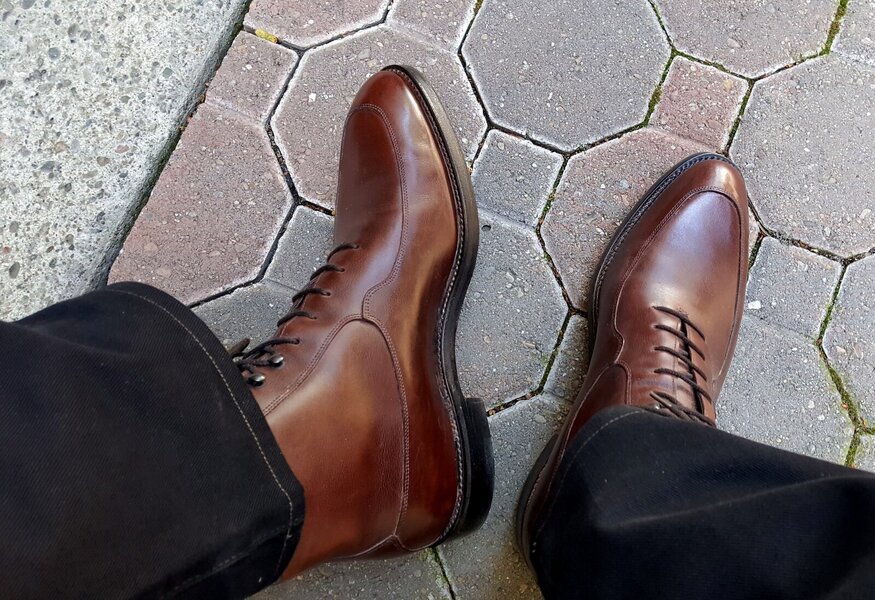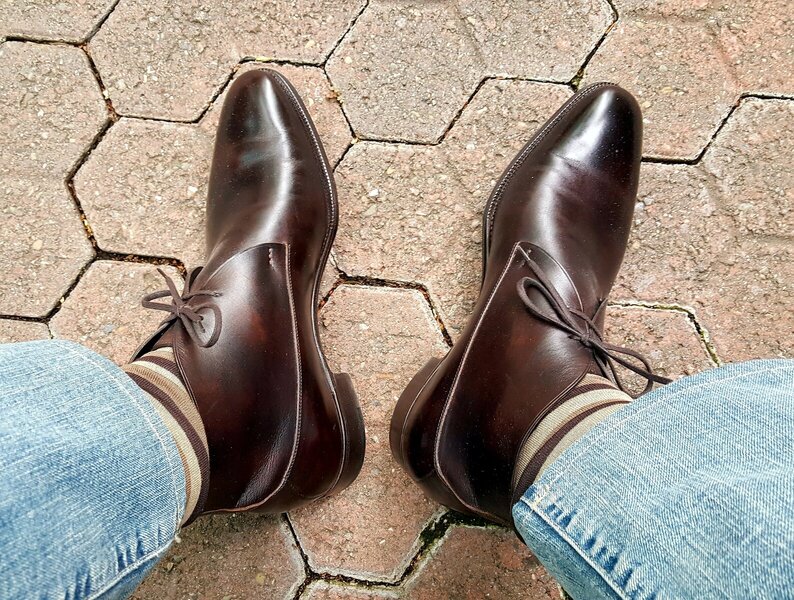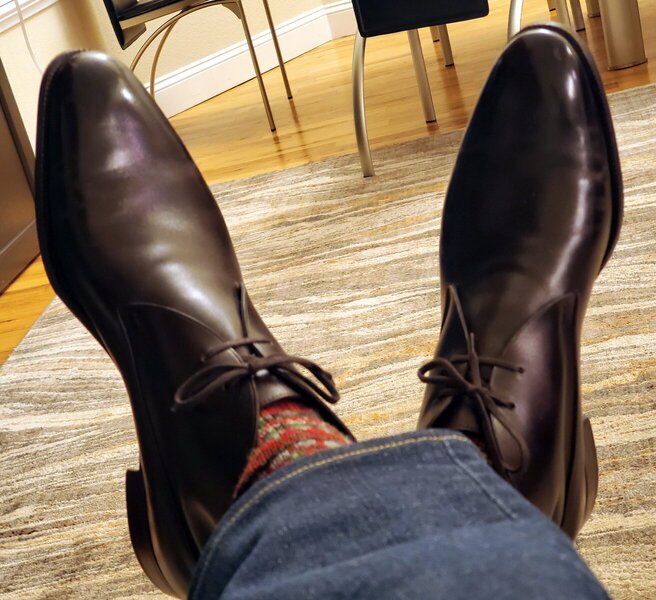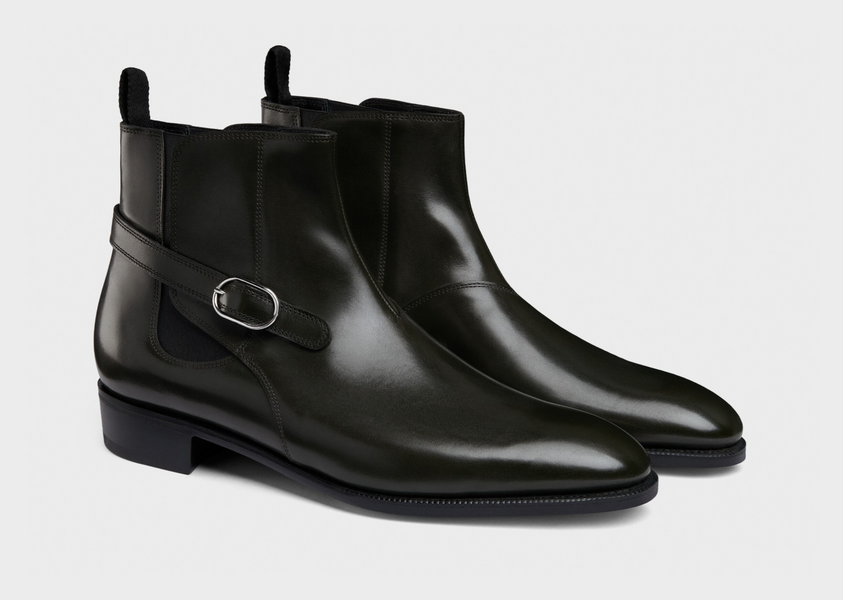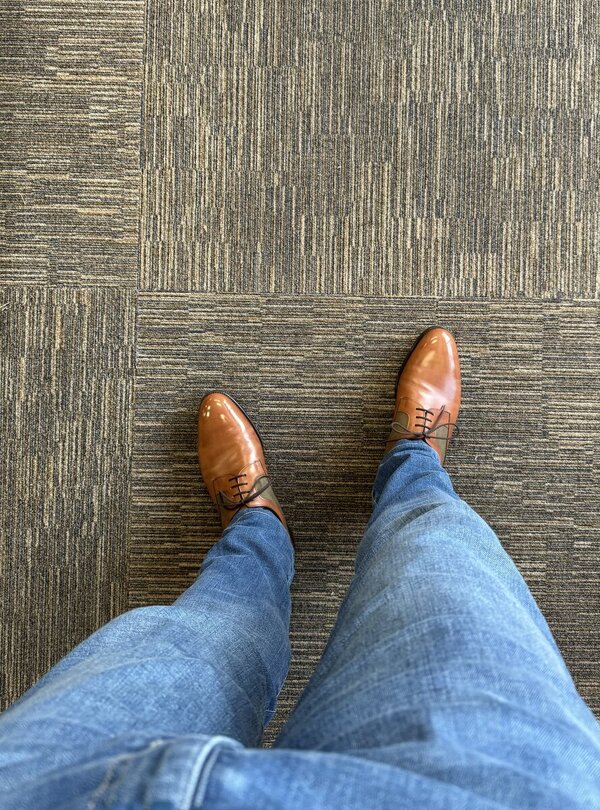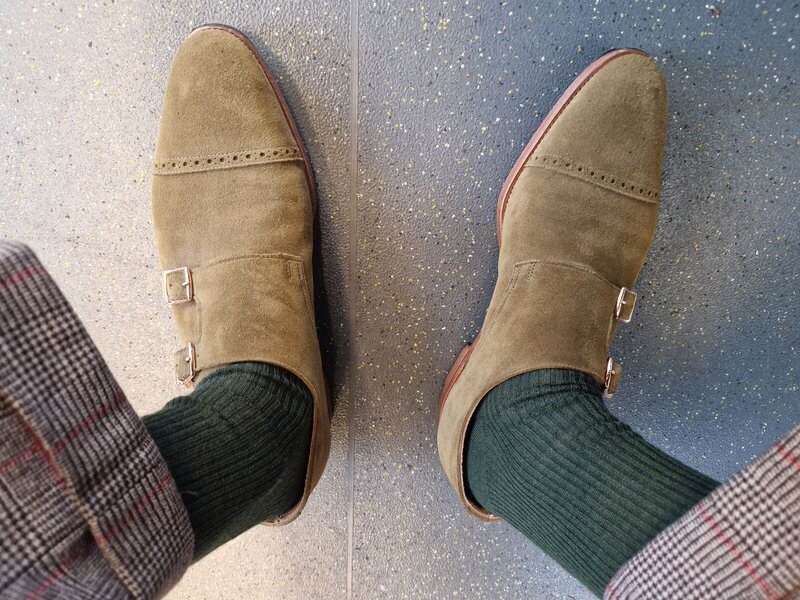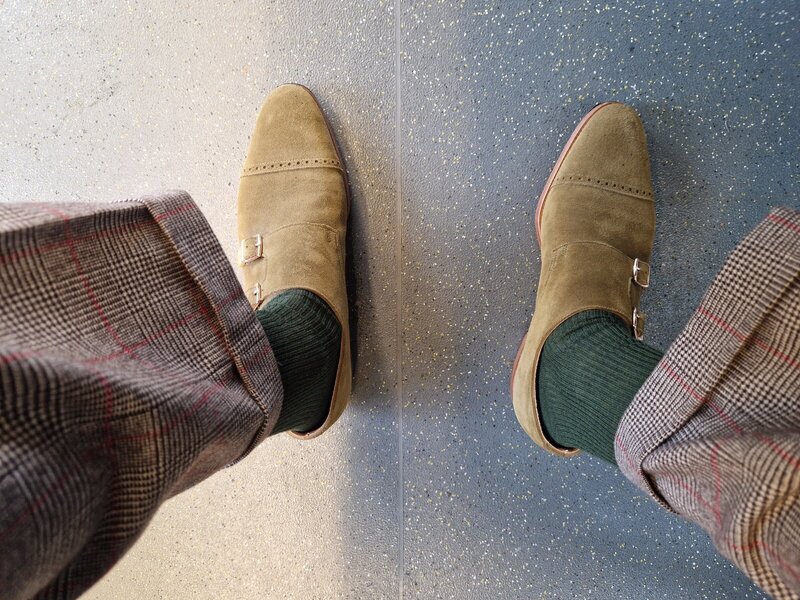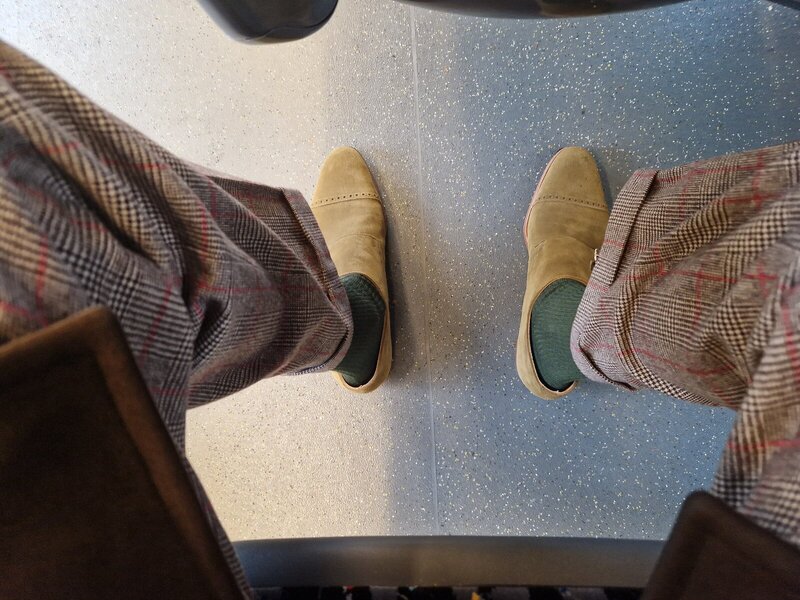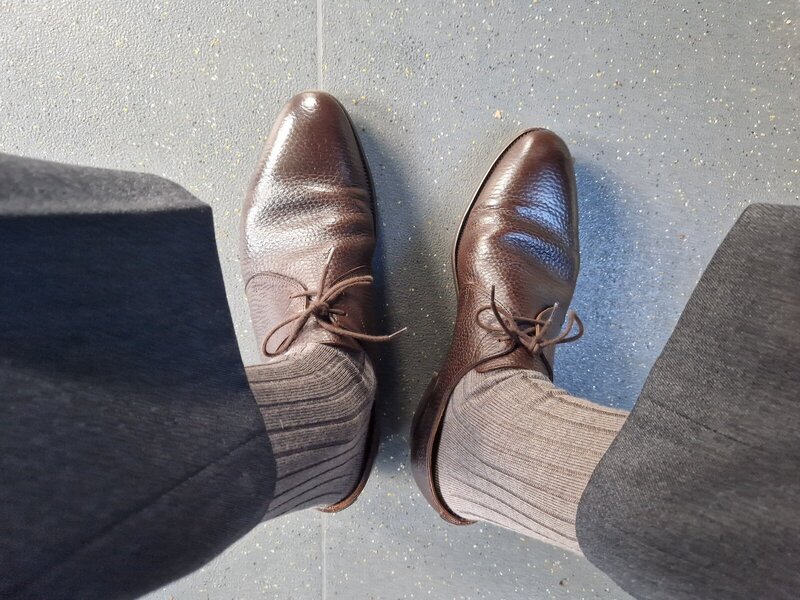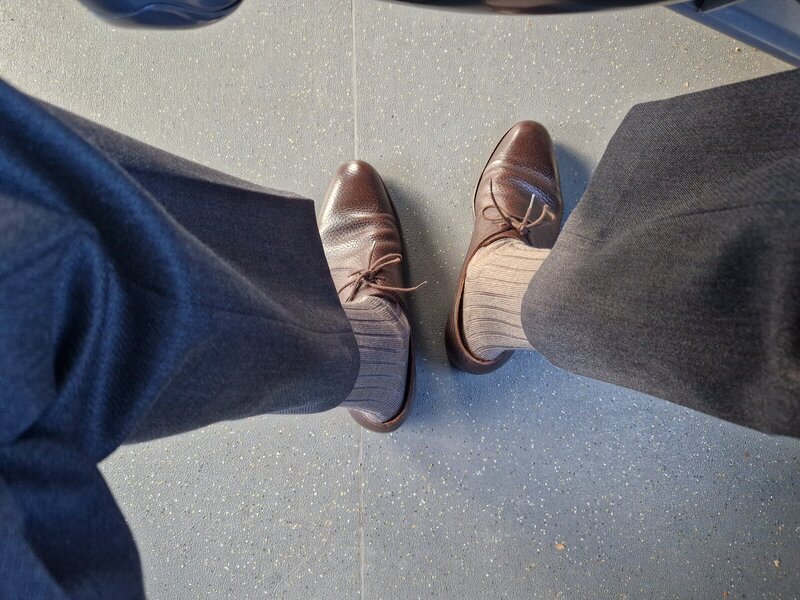chogall
Distinguished Member
- Joined
- Aug 12, 2011
- Messages
- 6,562
- Reaction score
- 1,166
I don't need more polishes but can I get something else instead? Like say some abbey horn shoes horn?
hand welting and goodyear welting are not mutually exclusive. The only difference is that one is sewn by hand and one is sewn by machine. If you look at any shoe, it is the same construction. It is a sole foundation, a foundation tacked on, followed by leather welting sewing on. The hot cork is then poured into the void. After this, the cork will be sewn down and a sole is put on. This sole is attached to the welting by stitches, which can be done by machine or hand. occasionally, higher end shoes will decoratively dig up the sides of the sole so that the welt sewing appears hidden. This does not change the fact that this is a goodyear welting method. If someone proves me wrong, I'll gladly buy them a bottle of safir polish or tin of wax.
I don't need more polishes but can I get something else instead? Like say some abbey horn shoes horn?



